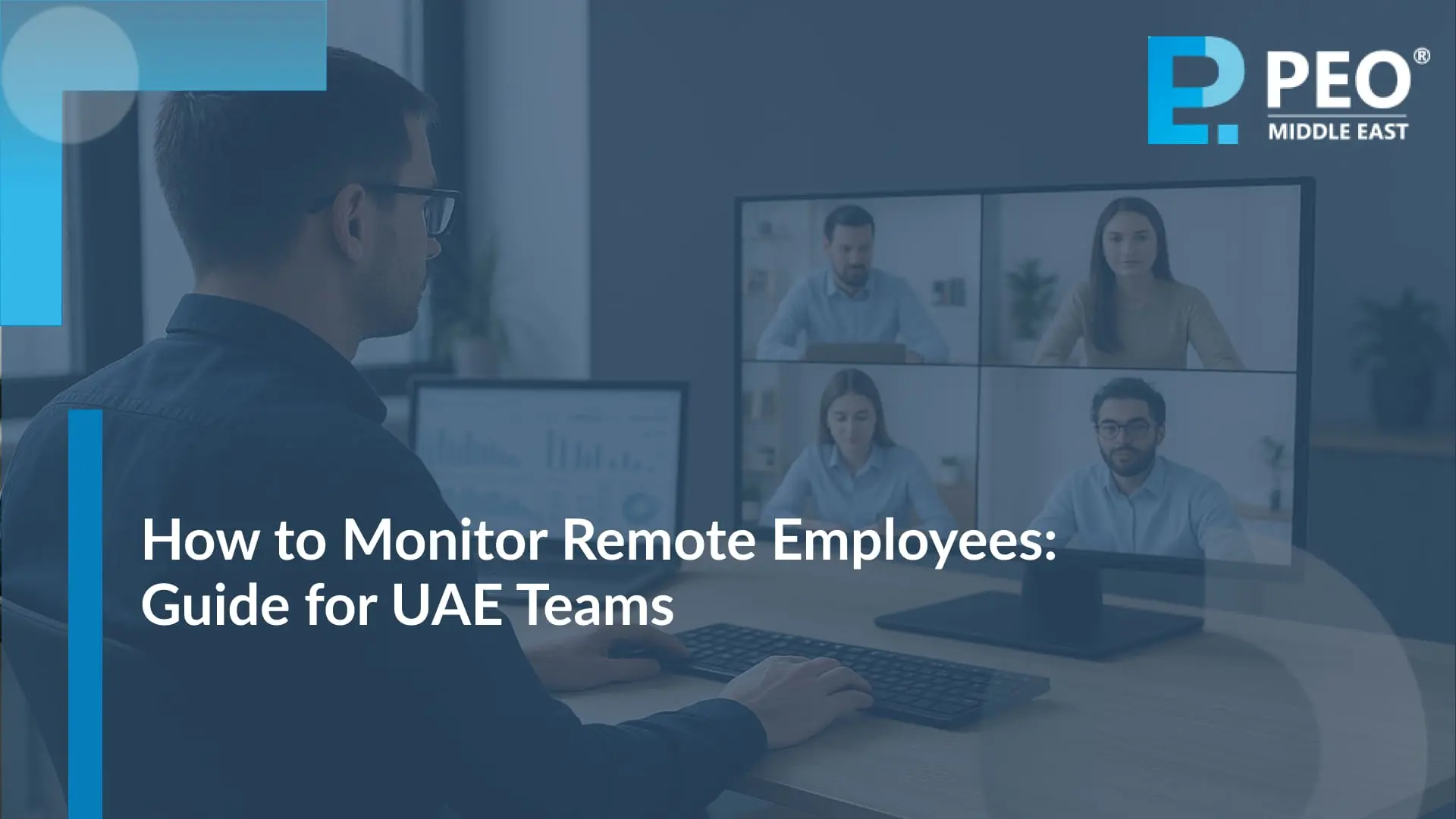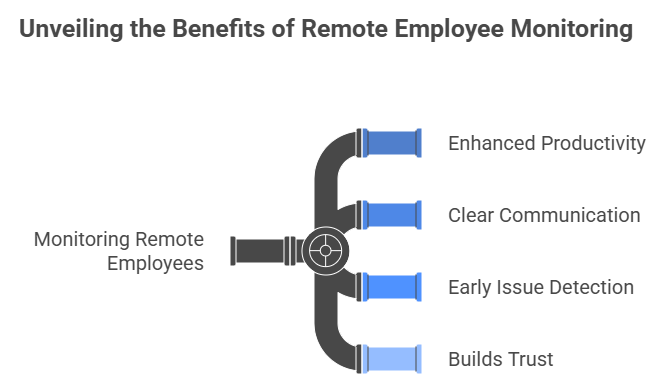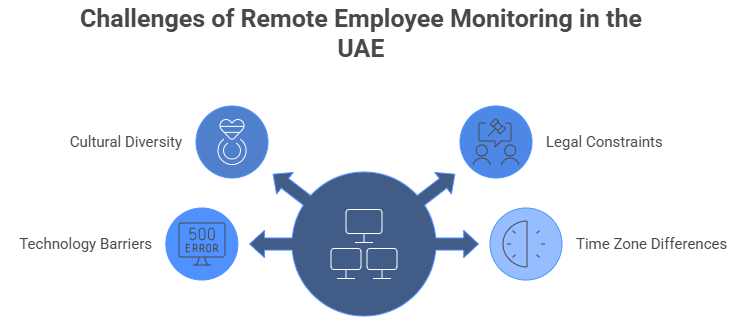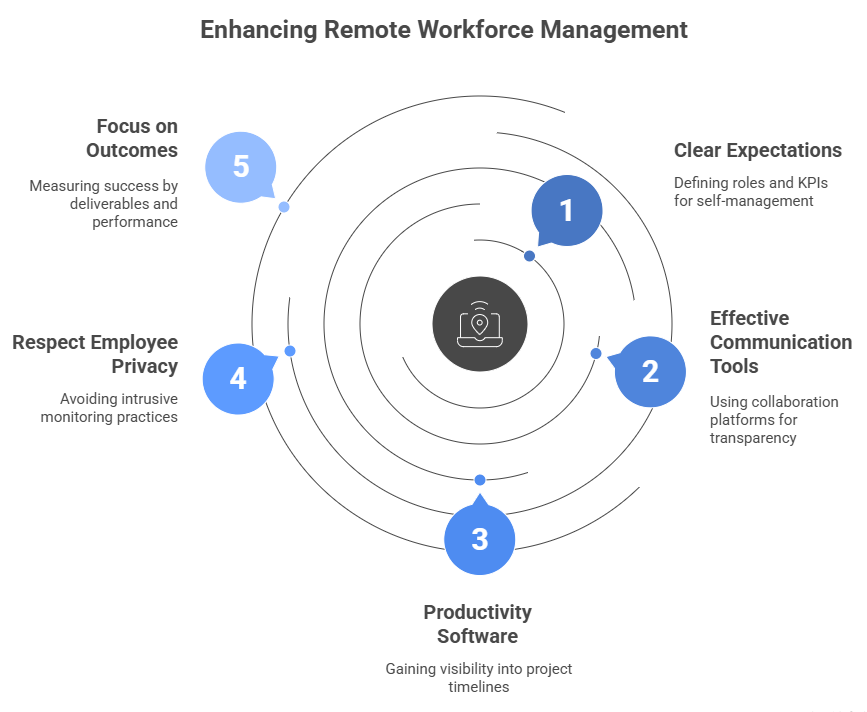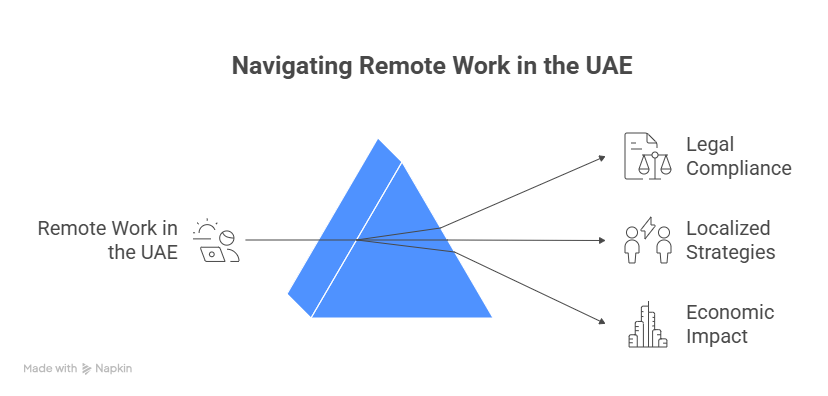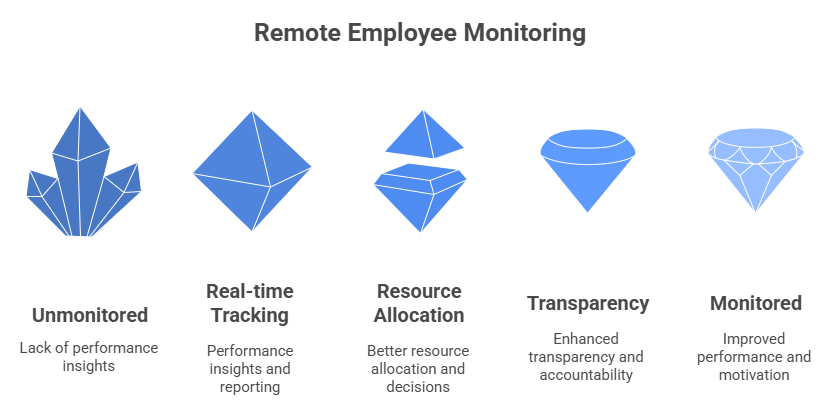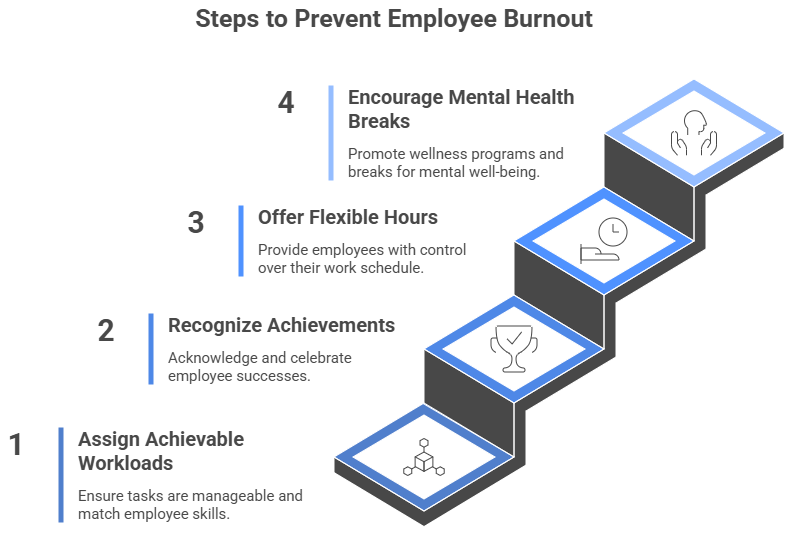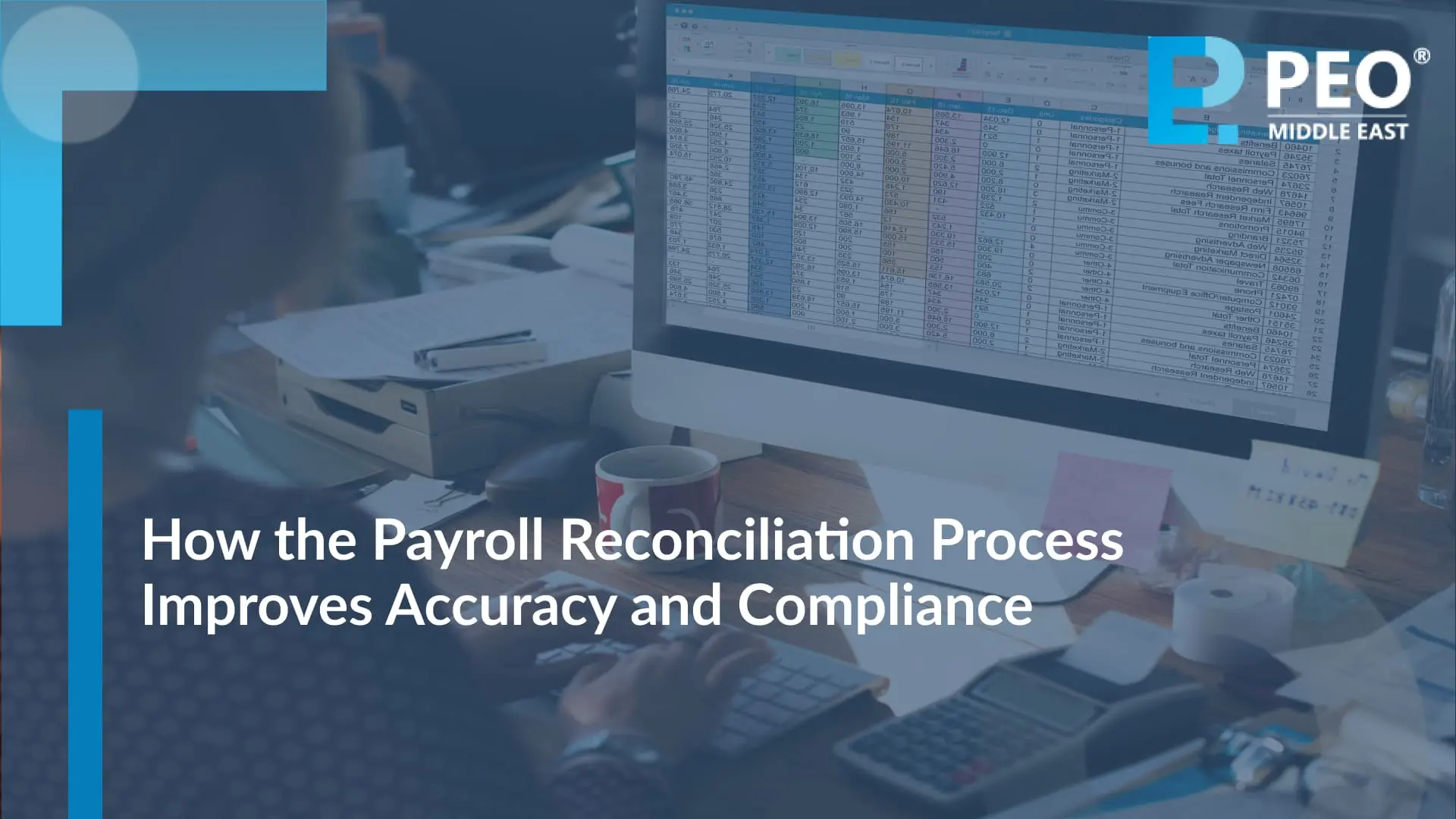Remote work is no longer an option it’s the future. As more professionals opt for flexible working, employers face new challenges in managing remote teams. Working outside the office, while liberating for employees requires a strategic approach backed by the right tools and accountability systems.
In this guide, we’ll explore why monitoring remote employees matters, how to do it effectively in the UAE, and the best practices, tools, and trends to help your business thrive.
Why Monitor Remote Employees?
Monitoring remote employees is essential for maintaining productivity and achieving business objectives. It provides clarity on task progress, fosters accountability, and ensures that teams stay aligned with organizational goals.
- Enhanced productivity: Employees are more focused when progress is transparent.
- Clear communication: Monitoring reduces misunderstandings and ensures timely delivery.
- Early issue detection: Workflow inefficiencies can be spotted and resolved quickly.
- Builds trust: Transparent systems show that you value fairness and performance.
Challenges of Monitoring Remote Employees in the UAE:
Managing remote teams in the UAE comes with unique challenges:
- Cultural Diversity: Teams consist of professionals from various nationalities, which makes communication and expectations more complex.
- Legal Constraints: Employers must comply with UAE data protection laws when monitoring staff.
- Technology Barriers: Internet stability and access to software may vary across locations.
- Time Zone Differences: Managing distributed teams can affect collaboration and scheduling.
Best Practices for Remote Employee Monitoring:
To monitor your workforce effectively and respectfully, implement these proven practices:
- Set Clear Expectations: Define roles, KPIs, and deliverables for every team member. Clarity reduces confusion and empowers employees to self-manage.
- Use Effective Communication Tools: Adopt collaboration tools such as Slack, Microsoft Teams, or Zoom to keep communication transparent and consistent.
- Leverage Productivity Software: Platforms like Trello, Asana, and ClickUp offer visibility into project timelines, assignments, and completion rates.
- Respect Employee Privacy: Avoid intrusive tools or constant screen monitoring. Always obtain consent before tracking work activities.
- Focus on Outcomes, Not Activity: Measure success by deliverables and performance rather than hours spent online — this boosts morale and trust.
Top Tools to Monitor Remote Employees in 2026:
Here are some top-rated tools businesses in the UAE and Middle East rely on:
| Tool | Key Features | Best For |
|---|---|---|
| Time Doctor | Time tracking, productivity reports | Small to large teams |
| Hubstaff | Employee monitoring, GPS tracking | Field-based teams |
| Toggl Track | Simple tracking, detailed reports | Freelancers and SMEs |
| ClickUp | Task management and workload overview | Project-based teams |
| Slack | Team chat, file sharing, app integration | Collaborative communication |
💡 Tip: Choose tools that comply with UAE data laws and integrate easily with your HR or payroll systems.
UAE-Specific Considerations for Remote Employee Monitoring:
Ensure your monitoring practices follow UAE Federal Decree-Law No. 45 of 2021 and secure employee consent before using monitoring tools.
Localized Strategies for UAE Businesses:
- Schedule regular 1:1 or team check-ins for alignment.
- Host virtual team-building sessions to enhance morale.
- Provide local IT support to address connectivity issues.
Remote Work & UAE Economy:
According to a GCC Business Report (2024), over 55% of UAE companies have adopted hybrid or fully remote models to cut costs and access global talent. Remote monitoring tools are crucial to maintaining productivity and compliance.
Benefits of Monitoring Remote Employees:
For Employers:
- Real-time performance insights and reporting.
- Better resource allocation and decision-making.
- Enhanced transparency and accountability.
For Employees:
- Clear expectations and goal tracking.
- Opportunities for skill development and promotion.
- Improved motivation through recognition and feedback.
How to Avoid Employee Burnout While Monitoring?
Monitoring should never feel intrusive or stressful. To prevent burnout:
- Assign achievable workloads aligned with skill levels.
- Recognize achievements and celebrate milestones.
- Offer flexible hours where possible.
- Encourage mental health breaks and wellness programs.
Future Trends in Remote Employee Monitoring:
- AI-Powered Insights: Predictive analytics will identify patterns and suggest performance improvements.
- Behavioral Analytics: Tools will analyze work habits, not just time spent.
- Mental Health Integration: New platforms may include stress indicators and wellness alerts.
Staying updated with these innovations ensures your business remains efficient and employee-centric.
PEO Middle East: Your Strategic Partner for Remote Workforce Management
Managing remote teams doesn’t have to be complicated. At PEO Middle East, we help businesses in the UAE streamline their remote employee management with compliant, technology-driven solutions.
- Hire and onboard remote employees legally in the UAE.
- Implement effective remote monitoring aligned with labor laws.
- Integrate payroll, HR, and compliance into one seamless process.
📞 Contact us today for a free consultation and learn how to boost your remote workforce productivity.

